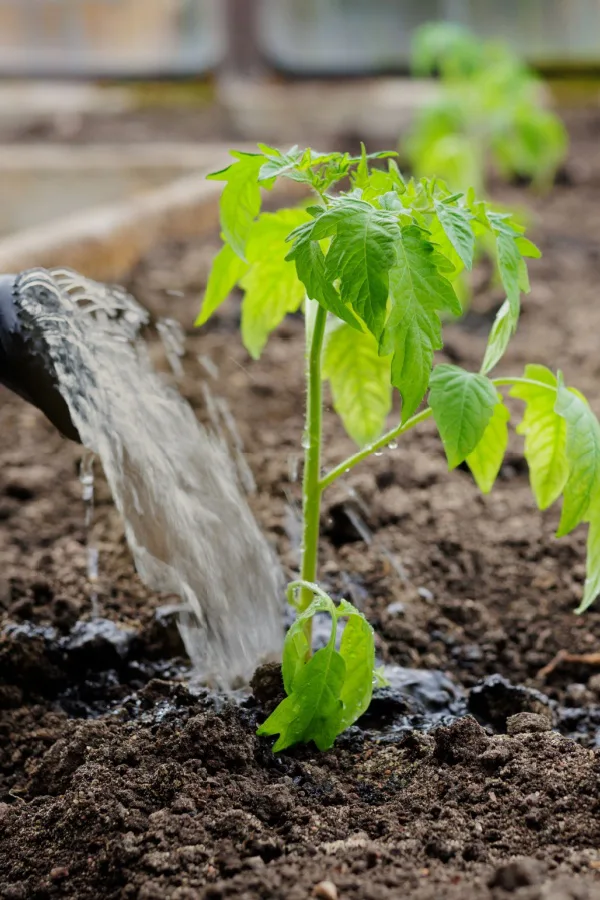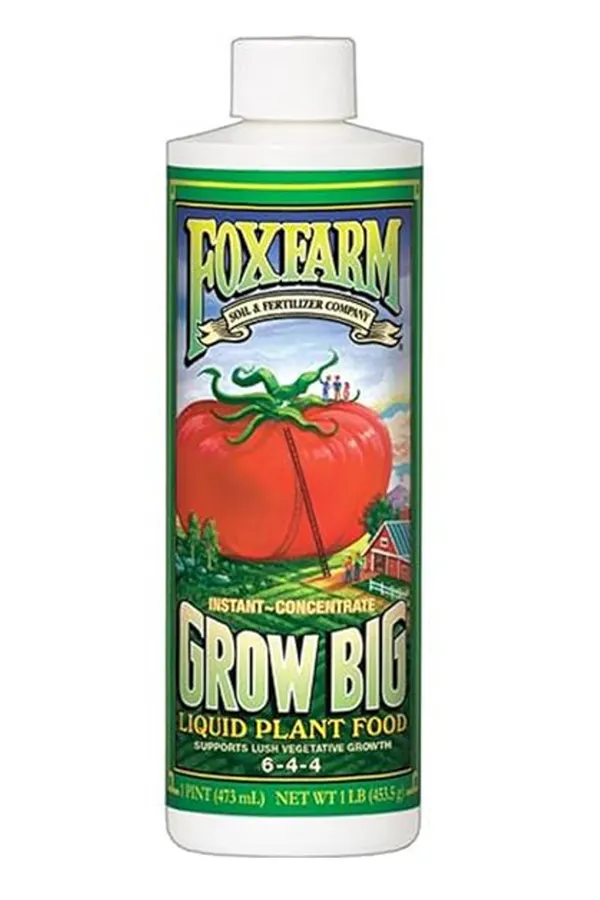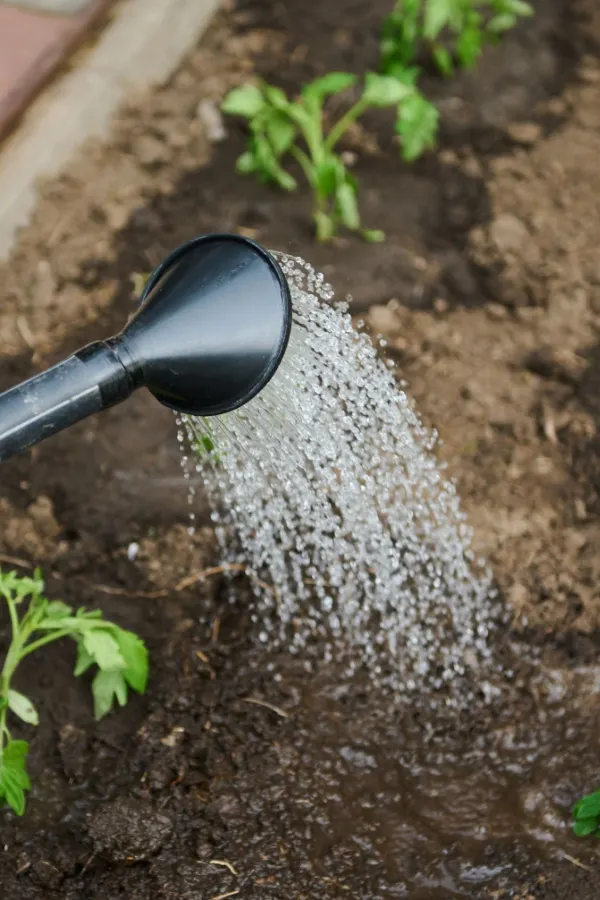Are you looking for a few simple ways to help your struggling young tomato plants this year finally take off and start growing?
Between heavy rains, colder than normal temperatures or extreme heat, gardeners often notice a lag in the growth of their tomato plants. Even under ideal growing conditions, sometimes it can seem difficult to get your tomatoes growing properly. And unfortunately, a slow start can be a big cause for issues further down the road.
A slow start can mean a weak root structure for your tomato plants. That causes a delay in producing lush, healthy foliage. And foliage is required for plants to turn the sun’s energy into food. Without strong roots and foliage growth, plants will simply fail to thrive.

The issue with plants lagging in growth is that the effects can be seen all throughout the growing season. A delay in producing roots and foliage also means that there will be a delay in bloom and eventually fruit production – if the plants produce at all.
The simple fact is, no matter what the weather conditions might be, the first few months after transplanting tomatoes can make or break tomato plants. Thankfully, even if your plants don’t seem to be growing like they should at the moment, there’s still time to get them back into shape and growing strong. But you do need to take action sooner rather than later!
How To Help Struggling Tomato Plants – 3 Secrets To Get Tomatoes Growing Fast!
Almost without fail, you can help struggling tomato plants take off by taking care of three major care issues.
The first is to provide plants with the right kind of nutrients to boost their growth. Secondly, you need to ensure proper watering since all too often too much or too little water can have major consequences for tomato plants. And last but not least, you need to provide plants with a powerful protection of mulch.
Let’s start by taking a look at how to power your plants with fertilizer to get them off and growing:
#1 Boosting Early Growth With Liquid Fertilizers
The best way to get your tomato plants up and growing again is to provide them with an extra boost of nutrients using liquid fertilizer. Unlike granules, liquid fertilizers work fast to provide an influx of nutrients to quickly help struggling tomato plants.

Use the liquid fertilizers over the course of a few weeks to really kick-start their growth. Add the fertilizer every 5 to 7 days until you have given about 3 to 4 applications total. Then, back off to a normal fertilization schedule of feeding plants every few weeks.
These quick, multiple applications will help turn your struggling plants around and get them on the way to becoming healthy, strong mature plants. Even with a smaller than average root system, providing plants with supplemental liquid nutrients is the best way to get much-needed nutrients into the plant’s system for fast growth.
What To Use As A Fertilizer – How To Help Struggling Tomato Plants
For the first few weeks, focus on using a fertilizer that is higher in nitrogen. This excess nitrogen will help plants focus on pushing out new stems and foliage. Product Link: Fox Farm Grow Big Liquid Concentrate Fertilizer
Once plants start to get going, you can then switch to a liquid fertilizer with higher levels of phosphorous. This will allow the tomato plants to focus on pushing out blooms and fruit instead of foliage. But for struggling tomato plants – the first few weeks it’s all about nitrogen.

Because you will be fertilizing more often for the first few weeks to power growth, dilute the liquid fertilizer to about 1/2 strength. This allows you to feed more often without giving too many nutrients all at once – but allows for a consistent feeding to spur plant growth.
#2 Proper Watering – How To Help Struggling Tomato Plants
In addition to needing a boost of nutrients, struggling young tomato plants also need adequate moisture. However, the key is finding that sweet spot where you don’t overwater or underwater plants.
Too much water and the plant’s roots will be too swollen to absorb and bring up nutrients from the soil. Too little water and the plants start to quickly dry out. The biggest issue is that all too often, gardeners simply rely on the look of the top of the soil to indicate whether plants need watering or not.
Often, the top inch or so of the soil will be dry and can even look cracked. Because of this, they continue to water. However, going down about 4 to 6 inches is where you should measure for moisture because that’s where the roots lie.

Only water tomato plants when the soil is dry several inches down. And when you do water, water plants deeply, helping to force the roots to grow deep down into the soil. See: The Best Way To Know When To Water Tomato Plants
The best way to tell if the roots need water is to use an inexpensive moisture meter. It takes the guesswork out knowing the soil’s moisture levels down deep. You simply put the probe down in the soil and get an instant reading of the moisture level. Product Link: XLUX Soil Moisture Meter
Mulch Your Plants For Power – How To Help Struggling Tomato Plants
Lastly, to help the soil retain all that moisture from watering, you need to add a thick layer of mulch. This one simple step in the planting process can make a huge difference in the health and productivity of plants.
Bare soil will dry out much quicker than soil that is covered. By adding a 4 to 6-inch layer of organic mulch like straw, grass clippings, or shredded leaves, you help the soil retain moisture much better.
In addition, you are also helping to protect a struggling tomato plant’s growing roots from temperature fluctuations. A thick layer of mulch helps to prevent the soil from becoming too cold or warm – both of which can stunt the growth of young tomato plants.
Mulch also helps to prevent weeds from germinating and competing for nutrients. That same layer of mulch also helps to protect plants from soil-borne diseases. Which can, of course, make already struggling plants even weaker.
But before you mulch, add power to it! Before adding a thick 4 to 6-inch layer of organic matter, put down a few inches of finished compost and worm castings around the root zone of each plant. This duo of nutrients will help to trickle down nutrients every time you water – waking plants up in the process!
Here’s to helping your struggling tomato plants turn into healthy and productive mature tomato plants!
I Grow Tomatoes
Follow Our Facebook Page For Even More Great Tomato Growing Tips! I Grow Tomatoes Facebook Page
I Grow Tomatoes is a website created for those who love all things about tomatoes – from planting and growing – to cooking and canning! We publish two articles every week, 52 weeks a year. Sign up today to follow via email! This article may contain affiliate links.
